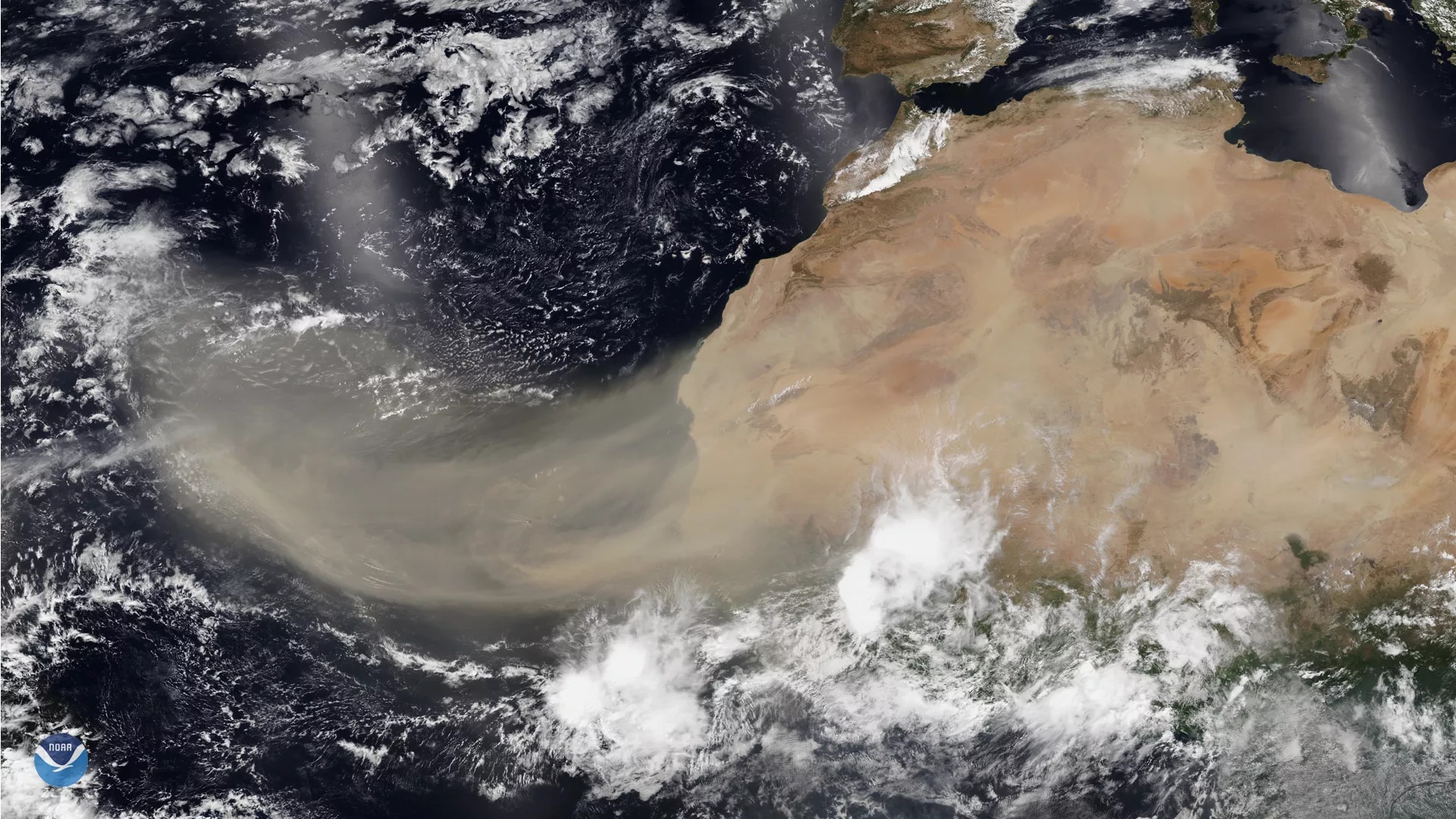Saharan Dust

Dust blowing off the Sahara Desert (Credit: National Oceanic & Atmospheric Administration)
Saharan dust is a type of particulate matter (PM) that originates in the Sahara Desert in Northern Africa. The dust is made up of particles that can be blown for thousands of miles.
Where does Saharan dust come from?
Saharan dust comes from the Sahara Desert in Northern Africa. Thunderstorms and cyclones can produce high-speed winds that lift the dust and transport it thousands of miles through the air. The dust can travel around the globe to parts of Europe, South America, Central America, the Caribbean, and the United States.
Saharan dust transported to the United States usually peaks from late June through mid-August. In the United States, the dust mainly affects Puerto Rico, the U.S. Virgin Islands, and southern continental states including Florida and Texas.
Saharan dust and your health
Saharan dust can be harmful to your health. The particles can be breathed in and enter your lungs and blood stream, potentially triggering asthma attacks in people who have asthma and aggravating other respiratory conditions. Saharan dust worsens air quality and increases the levels of particulate matter in the air.
How can Saharan dust affect my health?
Saharan dust can affect anyone. But like all particulate pollution, it bothers some people more than others. People most likely to experience health problems caused by exposure to Saharan dust include the following:
- Children and babies
- Older adults
- People with underlying lung conditions
- People with chronic cardiopulmonary diseases
If you have asthma, Saharan dust can make your symptoms worse. Carefully follow your asthma action plan on days when pollution levels are high.
Larger particles from Saharan dust can irritate the skin and eyes. Smaller particles from Saharan dust can be inhaled and cause respiratory disorders and cardiovascular events.
Saharan dust has been linked to increased emergency department visits for:
- Asthma
- Chronic obstructive pulmonary disease (COPD)
- Respiratory infections
How can I protect myself and my family from Saharan dust?
The good news is there’s a lot you can do to protect yourself and your family from the health effects caused by Saharan dust. Saharan dust affects air quality, so start by learning about the U.S. Air Quality Index.
The U.S. Air Quality Index or AQI tells you when air pollution is likely to reach levels that could be harmful. You can use the AQI as a tool to help you avoid Saharan dust and other particle pollution. Local TV stations, radio programs, and newspapers report the AQI. Try checking it when you’re planning your daily activities.
Take action
When Saharan dust levels are high, take steps to limit the amount of air you breathe in while you’re outside. For example:
- Think about spending more time indoors, where Saharan dust pollution levels are usually lower.
- Choose easier outdoor activities (like walking instead of running) so you don’t breathe as hard.
For more tools to help you learn about air quality, visit Tracking Air Quality.